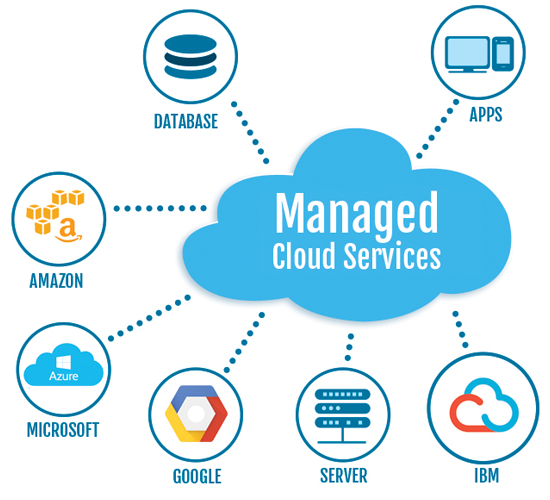Boost Your Company with LinkDaddy Cloud Services: Releasing Universal Cloud Service Possible
Wiki Article
Simplify Your Framework With Cloud Services
As services navigate the ever-evolving landscape of modern technology and information administration, the function of cloud services in simplifying infrastructure has actually ended up being significantly famous. The attraction of structured processes, boosted performance, and enhanced source appropriation via cloud remedies is indisputable. The journey towards a much more agile and affordable IT facilities includes even more than just moving to the cloud. It requires a tactical approach and a deep understanding of the nuances of cloud fostering. Exactly how can companies properly navigate this change and truly open the possibility of cloud services for simplifying their infrastructure?Advantages of Cloud Services
Cloud services use a structured approach to managing IT infrastructure, providing organizations with scalability, adaptability, and cost-efficiency. One of the crucial advantages of cloud solutions is the scalability they supply. Companies can conveniently scale their sources up or down based upon demand, guaranteeing they just spend for what they make use of. This adaptability is especially beneficial for businesses with fluctuating needs or those experiencing development.Furthermore, cloud solutions remove the requirement for companies to invest in pricey equipment and software application. This cost-efficiency is a considerable advantage, specifically for tiny to medium-sized business wanting to decrease upfront expenses. By utilizing cloud services, services can access premium IT resources without the substantial cost connected with conventional infrastructure configurations.
Additionally, cloud solutions supply organizations with the versatility to access their information and applications from anywhere with an internet connection. This level of accessibility improves partnership amongst groups, enables remote work, and boosts total productivity. The flexibility provided by cloud services encourages businesses to adjust promptly to changing market conditions and customer needs.
Cost Cost Savings and Scalability
In enhancement to the functional benefits highlighted earlier, the combination of cloud solutions right into a company's framework produces considerable expense savings and enhanced scalability. Cloud services provide a pay-as-you-go design, permitting services to scale sources up or down based on present demands, thereby avoiding the prices connected with preserving excess capability. This versatility enables companies to adjust swiftly to changing needs without incurring unnecessary expenditures.Additionally, cloud services remove the requirement for in advance investments in equipment and software program, decreasing capital investment. Operating expenditures are additionally decreased as business no longer need to take care of and keep physical web servers, resulting in lower power usage and IT staffing expenses. Additionally, cloud solutions offer automatic updates and upkeep, making sure that the facilities continues to be up-to-date and safe and secure without requiring manual treatments.
Improved Safety Measures
Implementing stringent security steps is vital when incorporating cloud services into a company's facilities to ensure and protect sensitive information conformity with market guidelines. Cloud solution companies offer improved safety features such as information encryption, firewall software protection, and multi-factor authentication to mitigate cybersecurity dangers.Moreover, normal protection audits and compliance assessments assist determine susceptabilities and make sure adherence to market criteria. Business can likewise benefit from functions like automatic protection updates and real-time threat monitoring provided by cloud provider. By focusing on safety and security measures and remaining aggressive in dealing with prospective dangers, companies can with confidence take advantage of cloud services while safeguarding their important data from unapproved gain access to or violations.
Transitioning to Cloud Framework
To effectively integrate cloud solutions right into a company's infrastructure, an organized technique that resolves the change in the direction of cloud-based solutions is necessary. Transitioning to shadow infrastructure involves cautious preparation and execution to make sure a smooth migration procedure - cloud services press release.As soon as the analysis is total, a movement approach need to be created. This strategy ought to describe the timeline, resources, and duties for relocating each component to the cloud. It is necessary to communicate this plan plainly to all stakeholders to make certain positioning and minimize interruptions during the transition.
During the movement surveillance, screening and process are important to recognize and address any kind of problems without delay. Routine checkpoints must be developed to track click here to find out more progress and make required modifications. In addition, training for workers on utilizing cloud solutions must be offered to ensure a successful shift and maximize the imp source benefits of the new infrastructure.
Ideal Practices for Cloud Adoption
Successful fostering of cloud solutions pivots on the critical alignment of company objectives with technical capabilities and business readiness. To ensure a smooth shift to the cloud, organizations need to start by conducting a thorough assessment of their existing framework and determining which work are best fit for cloud movement. It is critical to involve key stakeholders from different divisions in the decision-making procedure to gain buy-in and attend to any type of problems beforehand.An additional ideal method for cloud fostering is to prioritize safety and security and compliance. Organizations needs to thoroughly evaluate the safety and security steps provided by cloud service carriers and make certain that their data is safeguarded according to industry requirements and regulatory demands. Executing robust data security, accessibility controls, and regular safety audits can help reduce threats associated with cloud fostering.

Final Thought

As read the article businesses navigate the ever-evolving landscape of technology and data management, the function of cloud solutions in simplifying infrastructure has come to be progressively popular - Cloud Services. Just how can organizations successfully browse this transition and absolutely open the capacity of cloud solutions for streamlining their framework?
Cloud solutions offer a structured technique to handling IT facilities, offering businesses with cost-efficiency, scalability, and flexibility. By using cloud services, companies can access high-grade IT sources without the large cost tag associated with traditional facilities setups.
To make certain a smooth transition to the cloud, organizations ought to begin by conducting an extensive evaluation of their existing framework and recognizing which workloads are best suited for cloud movement.
Report this wiki page